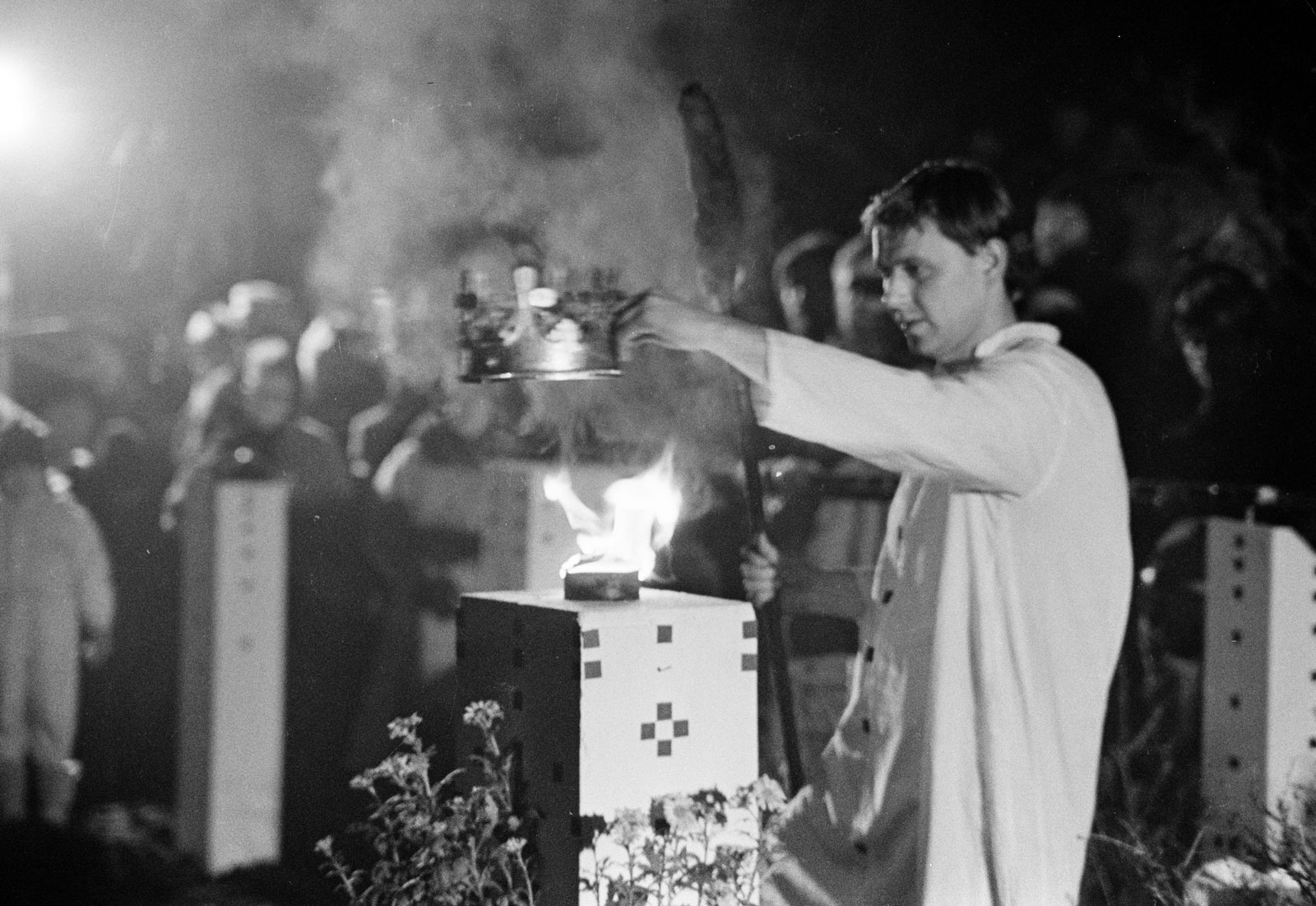Performance . 1987
Mooni 46A, Tallinn, Eesti.

Siim-Tanel Annus, who has earned international recognition through his graphic art works over the years 1976-1980, turned to performance art in 1980 as an art form taking place in space. Since performance was not considered by cultural bureaucrats to belong in the sphere of art, the artist devoted himself to it in the yard of his home in Tallinn or in seculded galleries up until the singing revolution in Estonia in 1988. The police from time to time reprimanded him at these galleries, and even put him behind the bars for a short time after one performance.
Siim-Tanel Annus took this pioneering task upon himself in the 1980’s to raise performance art from the fringes to the center of our figurative art. Not only that, he was one of the mos central figures or Estonian art with his performances in 1988-1991, and esthetic concentrate in his own way of that which occurres in our streets and squares during the time of the singing revolution. The emergence or Estonian art from cultural isolation which took place in that perios made it possible for Siim-Tanel Annus to be one of the main attractions at Estonian art exhibitions and cultural festivals in Finland, Sweden, Germany, Canada and Japan. He made the world conscious through his intensive performances of a land with a cruel fate and a people with a temperament tending towards mysticism, which believes it has come into Europe from the Far East and thinks it has aso integrates Celtic spiritual heritage into its own culture while settling down to live on the shores of the Baltic Sea.
The majority of Siim-Tanel Annus’s more that thirty performances have taken place outside in the dark or in darkened interiors. This is to create a metaphysical environment through the use of light sources selected by himself in which the existing three dimensional space, the objectsof real life used in the activity and the motion of a person all acquire a completely new meaning of material belonging to the flexible structure of the work of art, but alsoat times a symbolic meaning.
His white costume of sacramental character is not of little importance in Annus’s performances. The same goes for the abstract objects which often add expressiveness to the performance space and are like ambassadors in ther language of images from his earlier two dimensional works, bringing to mind fantastic cities. The artist also uses the tower motif often as a sign os aspiration upwards into the spiritual spheres, and the royal crown as the archetype of central power. The crown motif can be associated with the placement of God in the center of our lives, but also with the desire for our last kingdom, which is not of little importance to Estonians. This is because our people have never succeeded in creating their own kingdom regardless of corresponding attempts.
Text: Professor Leonhard Lapin








